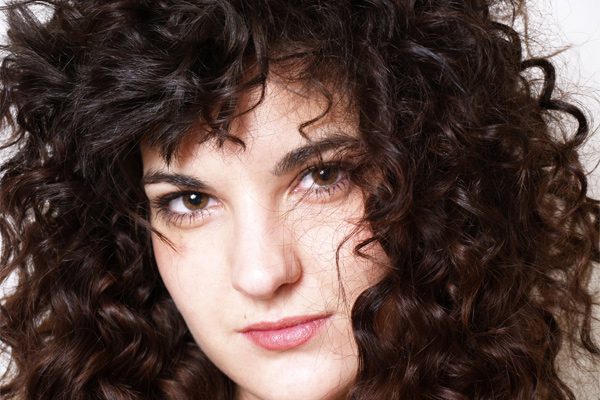Dryness, Split ends, flyaways, and breakage can understandably weigh down your curls. However, just a few tweaks in your daily routine can leave you with the gorgeous, soft, healthy and hydrated curls. Say goodbye to bad hair days full of frizz and fluff and hello to beautifully healthy curly hair with these 7 top tips.
There’s no denying it, a head of healthy, bouncy, curly hair is beautiful, and those of us with straight hair often wish we were blessed with a big halo of curls. In reality, however, maintaining healthy curls, not to mention styling them, can be a challenge. They’re prone to frizz, inherently dry, and usually coarse – often a far cry from the soft, shiny curls we see in beauty magazines and advertisements. However, if this resonates with you, there’s no need to wallow in self-pity and resign yourself to a life of fluff and frizz – we’ve found the answer to your problems! As it turns out, the difference between loving and hating your curls is dependent on every step of your haircare routine. I have yet to meet a curly hair girl who calls her hair predictable or problem-free. Read on for all the best tips for keeping them looking fabulous at all times.
More from Glowing Gorgeous: Find out here the Best Silicone-Free Moisturizers And Why Do You Care
Know Your Hair Type and Curl Pattern
Hair Type
Your hair type practically defines your while curly hair routine as well as which product is right for you. That is why knowing the curly hair types and which type you fall into is the first step in properly taking care of them. By hair type, I don’t mean how much hair you have but the diameter or the width of a single strand of your hair.
You can do a quick and easy test to find out your hair type at this very moment. Pluck out a strand of hair and hold it between your thumb and finger. If you can barely feel the strand there, then you have fine hair, if you can feel it there slightly then you have medium hair and if you feel a very prominent texture in between your finger and thumb then you have thick hair.
Curl Pattern
Another thing very important for your curly hair routine is, knowing your curl pattern. Here, I mean the naturally curly hair pattern i.e. the wavy, curly or spirally. So the best place to start figuring out your curl pattern would be from the roots where the new, damage-free hairs are.
Be warned! If you start a curly hair care routine without knowing your curl pattern, then you are exposing yourself to possible dryness, breakage, moisture theft and many more issue. Different curl patterns require different types and levels of care. For example, the more tightly coiled curly hair, like the 4C, needs more moisture than a slightly bent 2A.
Your curl pattern is dependent on the width shape of your hair follicle. The flatter the follicle is, the tighter the curl will be. Any damage to your hair or genes can lead to you having more than one curly hair pattern. it is completely normal, and lots of people have it, so no need to panic.
Haircare Starts Before Shampooing
Pre-shampooing using a conditioner or conditioning oil is something that many curly haired people swear by. Consider leave-in conditioning, natural oils, and even pre-shampoos before a wash to massage their scalp. All you need to do is divide your dry hair into sections and work the product through thoroughly, using your fingers to separate the curls. Leave the product in for around 20 to 30 minutes to allow your hair to absorb it, then get into the shower and shampoo as normal. Although this seems as though it’s a lot of time to add to your hair-washing routine, it’s likely to save time in the long run by making your hair much easier to detangle after it’s washed. Trust me, it makes shampooing your curly hair much easier, preventing damage during shampooing.
Pick Your Hair Products Carefully
Think of your hair type and curl pattern when choosing a shampoo. The best shampoo for curly hair is a mild, gentle shampoo – but because it doesn’t require washing as frequently as straight hair, try to avoid daily shampoos.
Harsh shampoos will strip your scalp of the natural oils and moisture and leave them drier than ever. This is why you need to carefully read the label of the shampoo you are thinking of purchasing to make sure they don’t contain any of the ingredients that are harmful to your curly hair type. Best shampoo for curly hair contains hydrating ingredients that boost the curls, making them pop.
Some curly-haired people even dilute shampoos with distilled water or cleansing conditioner to make them even milder, and others forego it altogether, opting instead for a homemade rinse containing baking soda and either warm water or apple cider vinegar.
Conditioner, on the other hand, is a curly-haired person’s friend – especially a deep conditioner. It should be used after shampooing and chosen according to the specific needs of your hair. For example, if your hair is weak or brittle, choose a strengthening conditioner containing keratin, but if it’s dry, choose a moisturizing conditioner. After it’s rinsed out, if you still feel like your hair requires more moisture, use a leave-in conditioner.
More from Glowing Gorgeous: Find out here Hyram’s Recommended Face Sunscreens For The Summer
Wash your hair less often. Also, make it less hot!
Let’s put this one in bold -> You don’t need to shampoo your curls daily.
For naturally curly hair, washing it every few days instead of daily is the best idea! Spacing it out evenly throughout the week will leave your hair looking luscious for longer. This will also preserve any dye job that you may have!
Applying less heat, in general, is a good idea for curly hair. Highlights thrive when they’re exposed to fewer chemicals that are in shampoo. They make products that are designed to preserve color treatment. Also, try not to fully blowdry your hair after each wash! Keep the settings on low or medium and reduce the level of heat. What we’d recommend instead is blow-drying the ends of the hair, and possibly a small section at the front, with a round brush, then letting it air-dry – either down or in a low ponytail. Alternatively, you could do what curly-haired people refer to as ‘plopping’ – pile your wet, detangled curls into a soft cotton t-shirt or microfiber towel, wrap it and leave for around 5 to 10 minutes before removing. An old t-shirt is better at avoiding frizzy hair. After that, leave it to dry naturally. This even works for long curly hair.
Shampoo Is For Your Scalp
Take a dime-size amount of shampoo in your palm and work that in your scalp using only the pads of your fingertips, NOT your nails. Do not go in a swirling motion; you will only tangle your hair more this way. Instead, go in a more horizontal or vertical motion and work the product thoroughly. Don’t curtain-rub the length of your hair. Instead, gently squeeze down the shampoo from your scalp to your hair length. Remember, in shampooing, you are supposed to go from top to bottom.
Washing your hair, section by section, will make the whole process a lot easier. Just like how you sectioned your hair to detangle, do the same for your hair while you are showering. Twist and clip the sections you are not washing. Lather, rinse and repeat each section thoroughly.
Sleep Soundly on Satin
It might sound surprising, but the type of pillowcase you use can have a huge effect on your curls. Cotton pillowcases are generally too rough for curly hair and cause it to frizz and tangle. Satin, on the other hand, is perfect for curls – and silk works well too. If you don’t want to splash out on new bed linen, however, you can always wrap your hair in a satin scarf while you sleep, which should keep the curls sleek and in place.
Bonus tip: Try the ‘Pineapple Trick’
If wrapping your hair in a satin scarf while you sleep doesn’t sound like your thing, many curly-haired people swear by the ‘pineapple trick’ – a tried-and-tested technique as a way of maintaining the shape of curls throughout the night and preventing ‘bedhead.’ Just loosely tie (preferably using a thick scrunchie, rather than a thin band) all your hair at the highest point of your head, and you’re good to go – in the morning, the curl pattern should be undisturbed and natural volume should be maintained, without any unwanted frizz and fluff.
Avoid the Heat
It’s an undeniable fact: curly hair does not like heat, whether that’s a hot and humid environment or exposure to blow-dryers, curling tongs, or straightening irons. These all cause curls to fluff, as well as potentially leading to breakage. Air drying is always the best drying process for curly hair – whether that’s as it falls or after being set in twists or foam rollers to set the shape. There’s bound to be a time, however, when you do need to use heated hair appliances – and when you do, make sure they’re of high quality, preferably containing ionic properties and made with ceramic. Additionally, you should always apply a heat protection product to your hair before using a heated appliance.
Read more about heatless curls here.
Bonus Tips
‘Dust’ Between Hair Cuts
‘Dusting’ is a hair term that’s well-known in the world of curls – and one we’d definitely recommend. Curly hair often grows in an unruly fashion – and, due to its inherently dry, coarse nature, it is often brittle and, therefore, breaks easily. Therefore, between hair appointments – which are often extremely costly – it’s advisable to ‘dust.’ First, style your hair as you usually would, then go through it – curl by curl – to find the tips that look or feel broken or rough. Then, simply snip them off using a pair of hair scissors, which can be found in most beauty supply stores and hairdressing salons. Ensure you carry out this process when your hair is dry, however, so you’ll know exactly how it will look – curly hair is much longer when wet and ‘shrinks’ as it dries, so you don’t want any nasty shocks after accidentally cutting off too much!
Make sure to get regular trims.
It doesn’t always have to be expensive to get a haircut. In fact, getting regular trims can save you some cash! Scheduling your trims regularly will make them less intricate and in turn, less expensive. You can also try trimming your hair at home! This can feel a bit scary for beginners, but online tutorials will make you a pro in no time. Your local beauty supply store will carry professional-quality shears. Ask a clerk to help you pick the right ones! Trim the tips of your curls every few weeks will leave it looking even. This method is called “dusting.”
Unleash Your Curls!
There you have it – our definitive list of the best tips for strong, healthy, bouncy, shiny, beautiful curly hair. They’re relatively easy to incorporate into everyday life – plus, most are free (or at least cheap!), so you won’t have to choose between a healthy bank balance and a healthy head of hair! Now, you can banish those bad hair days full of frizz and fluff and unleash the beauty of your curls on the world – we have no doubt that you’ll be the envy of many.



Comments